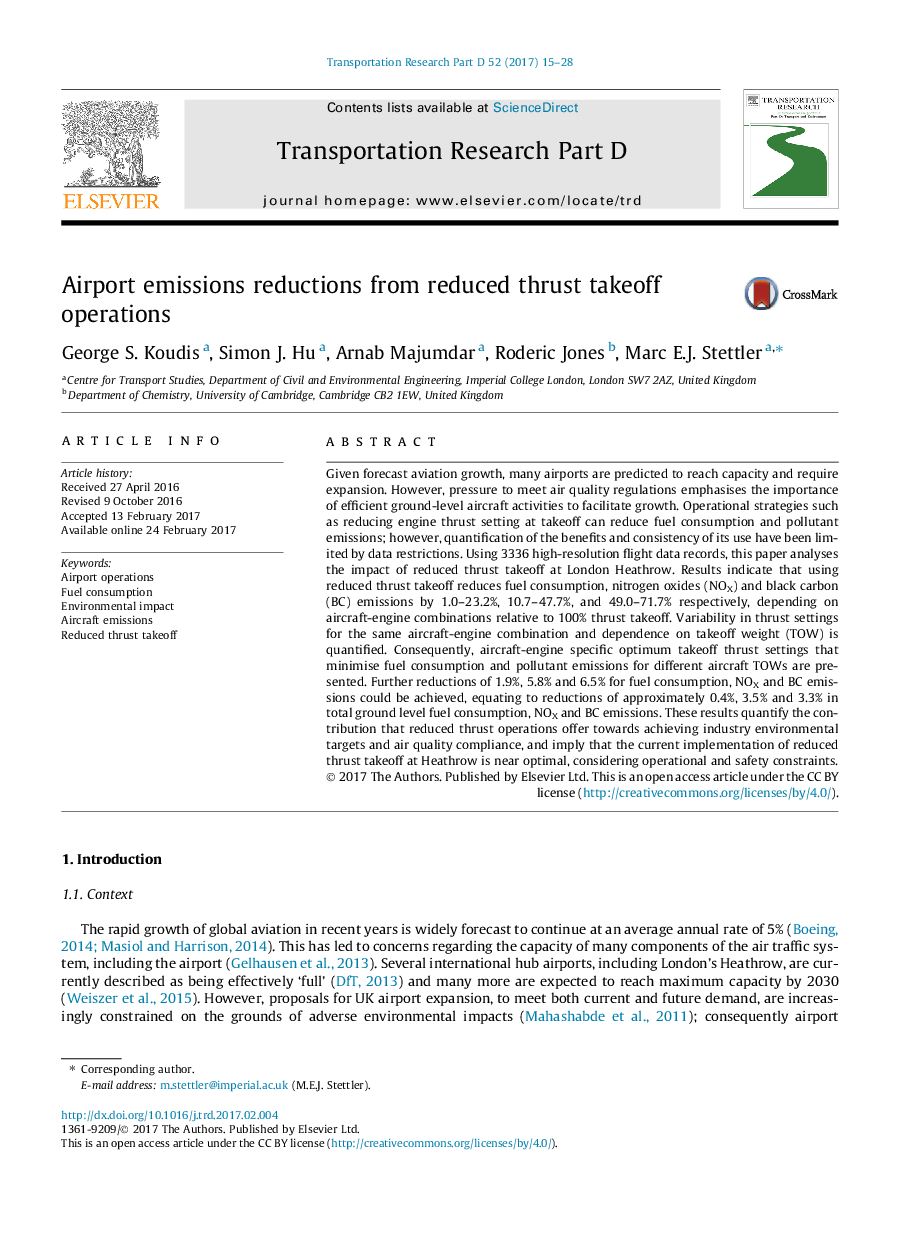| Article ID | Journal | Published Year | Pages | File Type |
|---|---|---|---|---|
| 5119248 | Transportation Research Part D: Transport and Environment | 2017 | 14 Pages |
â¢Empirical analysis of 3336 reduced thrust takeoffs at London Heathrow.â¢Fuel (â13.2%), NOX (â34.7%) and BC (â58.8%) reduced compared to 100% thrust.â¢The impact of takeoff weight on optimum engine thrust setting is evaluated.â¢Further optimisation of thrust reduces fuel (â1.9%), NOX (â5.8%) and BC (â6.5%).
Given forecast aviation growth, many airports are predicted to reach capacity and require expansion. However, pressure to meet air quality regulations emphasises the importance of efficient ground-level aircraft activities to facilitate growth. Operational strategies such as reducing engine thrust setting at takeoff can reduce fuel consumption and pollutant emissions; however, quantification of the benefits and consistency of its use have been limited by data restrictions. Using 3336 high-resolution flight data records, this paper analyses the impact of reduced thrust takeoff at London Heathrow. Results indicate that using reduced thrust takeoff reduces fuel consumption, nitrogen oxides (NOX) and black carbon (BC) emissions by 1.0-23.2%, 10.7-47.7%, and 49.0-71.7% respectively, depending on aircraft-engine combinations relative to 100% thrust takeoff. Variability in thrust settings for the same aircraft-engine combination and dependence on takeoff weight (TOW) is quantified. Consequently, aircraft-engine specific optimum takeoff thrust settings that minimise fuel consumption and pollutant emissions for different aircraft TOWs are presented. Further reductions of 1.9%, 5.8% and 6.5% for fuel consumption, NOX and BC emissions could be achieved, equating to reductions of approximately 0.4%, 3.5% and 3.3% in total ground level fuel consumption, NOX and BC emissions. These results quantify the contribution that reduced thrust operations offer towards achieving industry environmental targets and air quality compliance, and imply that the current implementation of reduced thrust takeoff at Heathrow is near optimal, considering operational and safety constraints.
